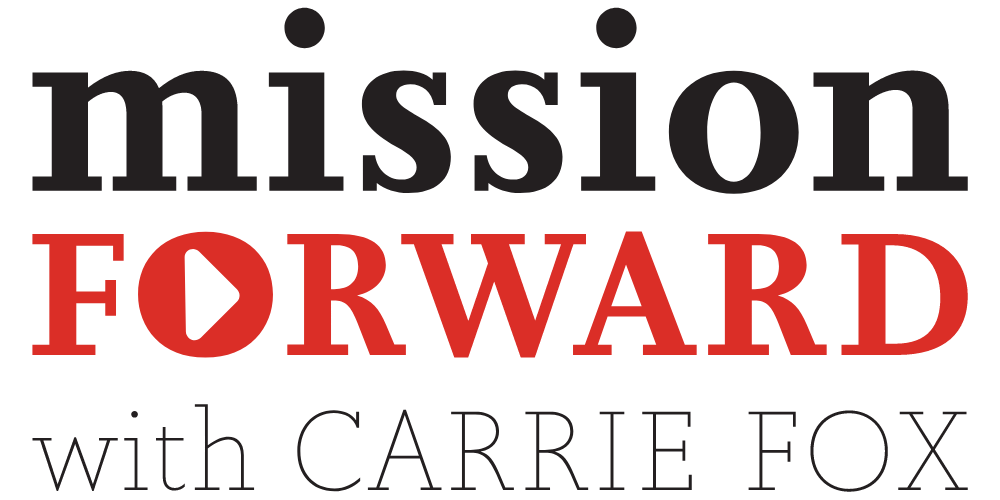A Welcome Debate.
This article is part of Finding the Words, a newsletter that delivers practical insights on the day’s issues.
On September 10, less than one week from today, presidential candidates Kamala Harris and Donald Trump will meet side by side on national television for the only formal debate between the two candidates before November’s general election. And while debate details are still forming, political commentators are sharing predictions (and opinions) in abundance.
Reading up on debate details earlier this week, I came across a line from one such commentator, Democratic strategist James Carville, who said:
"There’s nothing more that America likes than a train wreck…They saw one on June 27th (referring to the Biden-Trump debate)…so they’re going to tune in, in hopes of seeing another train wreck. People just love train wrecks."
Well, that’s one way to put it.
While Carville has formed his opinion about what will happen on September 10, I’m hopeful that this debate may give us a critical glimpse into how two people, both interviewing for the same job, choose to use communications to connect with their audience.
Will they disagree better than the candidates in debates before them? I believe so. And who will disagree best? I look forward to finding out.
All this talk of disagreeing better inspired me to resurface Monica Guzman’s book, I Never Thought of It That Way: How to Have Fearlessly Curious Conversations in Dangerously Divided Times. In the book, Guzman shares an anecdote about Alfred P. Sloan, former CEO of General Motors, who helped the company grow from the 1920s through the 1950s.
The tale goes that during a meeting in which GM’s top management team was considering a weighty decision, Sloan closed the meeting by asking: “Gentlemen, I take it we are all in complete agreement on the decision here?” He then waited as each member of the assembled committee nodded in agreement before continuing: “Then, I propose we postpone further discussion of this matter until our next meeting to give ourselves time to develop disagreement and perhaps gain some understanding of what this decision is about.”
As Guzman shares in her book, when Sloan asked his staff to develop disagreement, he wasn’t asking them to find things to fight about. He was asking them to look harder at something they weren’t seeing.
When communicating across divides, through unpredictable situations, or about contested issues, this tenant of challenging information and being open to healthy disagreement is essential to success. Beyond the words, beyond the opinions, beyond what you see, what might you find if you listened closer? And might it help you disagree better?
Disagreement isn’t something to shy away from. It’s often the vehicle by which we can learn to understand each other better.
Perhaps this is too much to ask of presidential candidates on September 10, but how about in your own workplace? What might it look like to disagree better?
If you’re up for learning, here are a few practices to explore:
Start from a place of curiosity: Come into meetings and conversations with a mindset of “I don’t know, but I’d like to understand.” The simple act of being willing to hear and understand each other better can help us navigate through difficult divides.
Acknowledge different viewpoints. There will be moments when you face difficult questions or are overwhelmed by a political conversation. Being able to acknowledge differing viewpoints signals that you hear what’s being shared and that you appreciate it, even if you disagree with it.
Diffuse a situation before it starts. We suggest employing a device we call “First Draft Thoughts.” Coined by our colleague Rachel Ware, the notion of sharing preliminary thoughts in a meeting or conversation takes some of the edge off, particularly when discussing contested issues. It invites reflection, collaboration, and sharing without firmly planting a position for reaction or rebuttal.
Reflect on how the disagreement made you feel. To further build your muscle for deep listening and learning, ask yourself this at the close of critical conversations and meetings: "What do I know now that I didn’t know then?” And what can I do with this information?"
Bottom Line: Disagreement and debate don’t have to be bad words, and they shouldn’t be written off before they begin. Consider opportunities to disagree better on issues as a practice to bring people closer together.
This post is part of the Finding The Words column, a series published every Wednesday that delivers a dose of communication insights direct to your inbox. If you like what you read, we hope you’ll subscribe to ensure you receive this each week.







I know the feeling of wanting more from a colleague—and the feeling of personally underdelivering. Even when I’ve given something my all, sometimes the results are less than I hoped. Those moments can be defeating, and they can knock us off course. If they happen too often, they’re a certain recipe for job transition. So, I’ve come to navigate these requests differently in recent years.